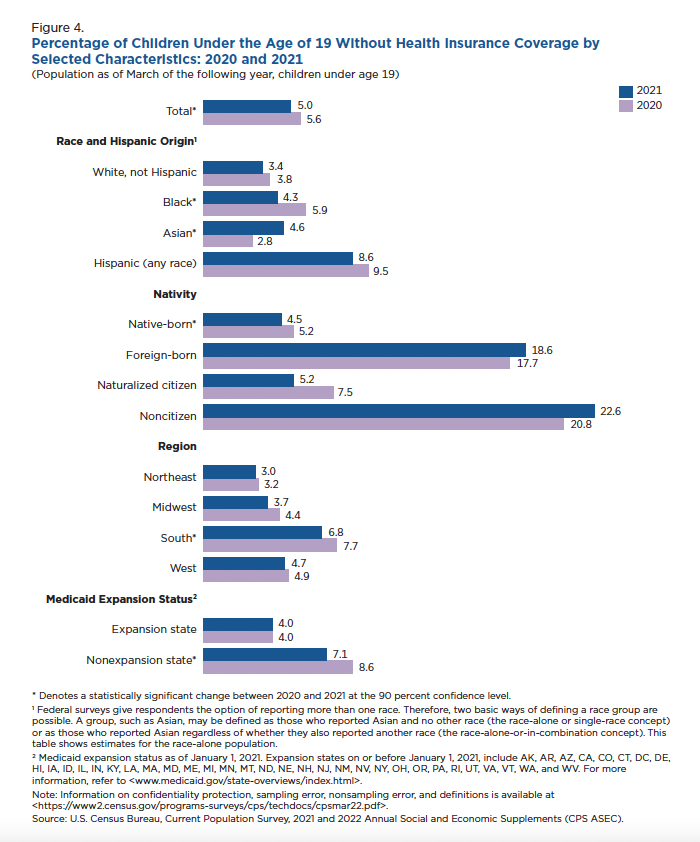Data released today show the number of U.S. children without health insurance declined for the first time in at least four years in 2021, aided by government policies that helped maintain their access to medical care.
Just under 4 million children — or 5% of all U.S. children — went without health insurance in 2021, according to new data from the U.S. Census Bureau, a 0.6 percentage-point drop from 2020. The figure represents 475,000 children who gained or retained insurance in 2021, largely due to increased public coverage through Medicaid or the Children’s Health Insurance Program, which took over as job losses and other economic issues decreased children’s private coverage.
“Insuring our nation’s 73 million children — and keeping them insured — offers one of the best investments we can make in their health and well-being,” said First Focus on Children President Bruce Lesley. “We are pleased to see this decline in the number of children who go without insurance and Congress must move quickly to cement these gains. Congress also must make permanent the Children’s Health Insurance Program. CHIP, which insures 10 million children each year, is the only federal health insurance program that requires constant renewal. When Congress allows it to expire — as they did in 2017 — they endanger the health care of the next generation.”
Congressional measures that increased funding for Medicaid and prevented states from withdrawing health care coverage during the declared Public Health Emergency surrounding the coronavirus pandemic helped children gain or retain access to medical coverage. When the PHE ends, so will the Maintenance of Effort requirement keeping kids on Medicaid. The Centers for Medicare and Medicaid Services recently announced a plan to strengthen coverage, but to ensure continued health coverage for children, Congress must enact 12-month continuous eligibility for kids to make the gains permanent.
The census figures show that in 2021 nearly 36% of children were covered by Medicaid or CHIP, up 1.2 percentage points from 2020, an increase of roughly 752,000 children.
Changes in the uninsured rate and in public coverage were not equally distributed across groups, however. Children in families experiencing poverty or near poverty showed no change in either private coverage or Medicaid and CHIP coverage rates between 2020 and 2021. The percentage of Asian children without insurance rose nearly 2 percentage points to 4.6%. Black children made the biggest gains, with the uninsured rate falling 1.6 percentage points from 5.9% to 4.3%. Despite a nearly 1 percentage-point drop in the uninsured rate, Hispanic children continue to post the highest uninsured rate, at 8.6%.
Children in the South have the highest uninsurance rate in the country, at 6.8%, more than 2 full points higher than the second highest region, the West.

